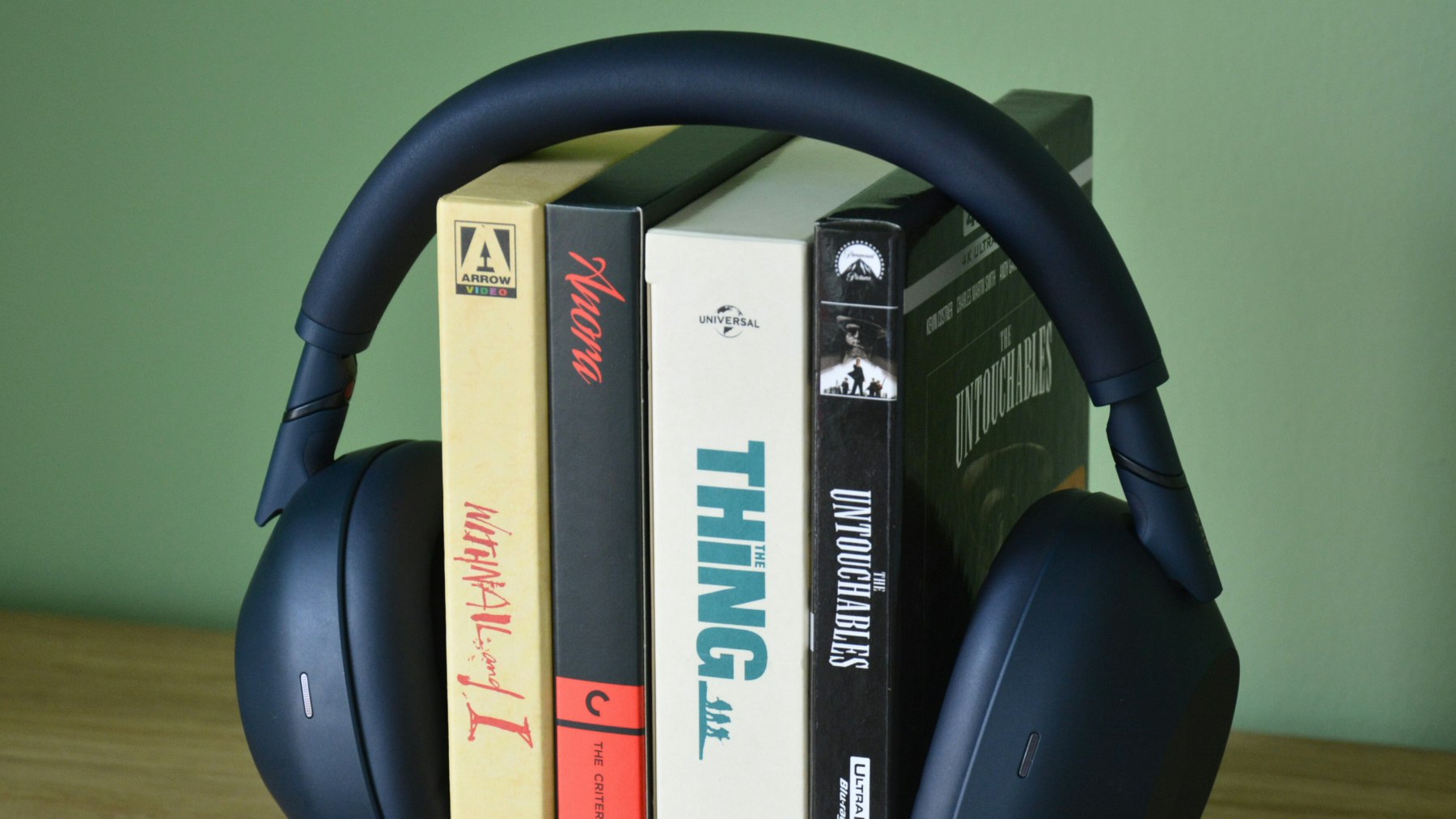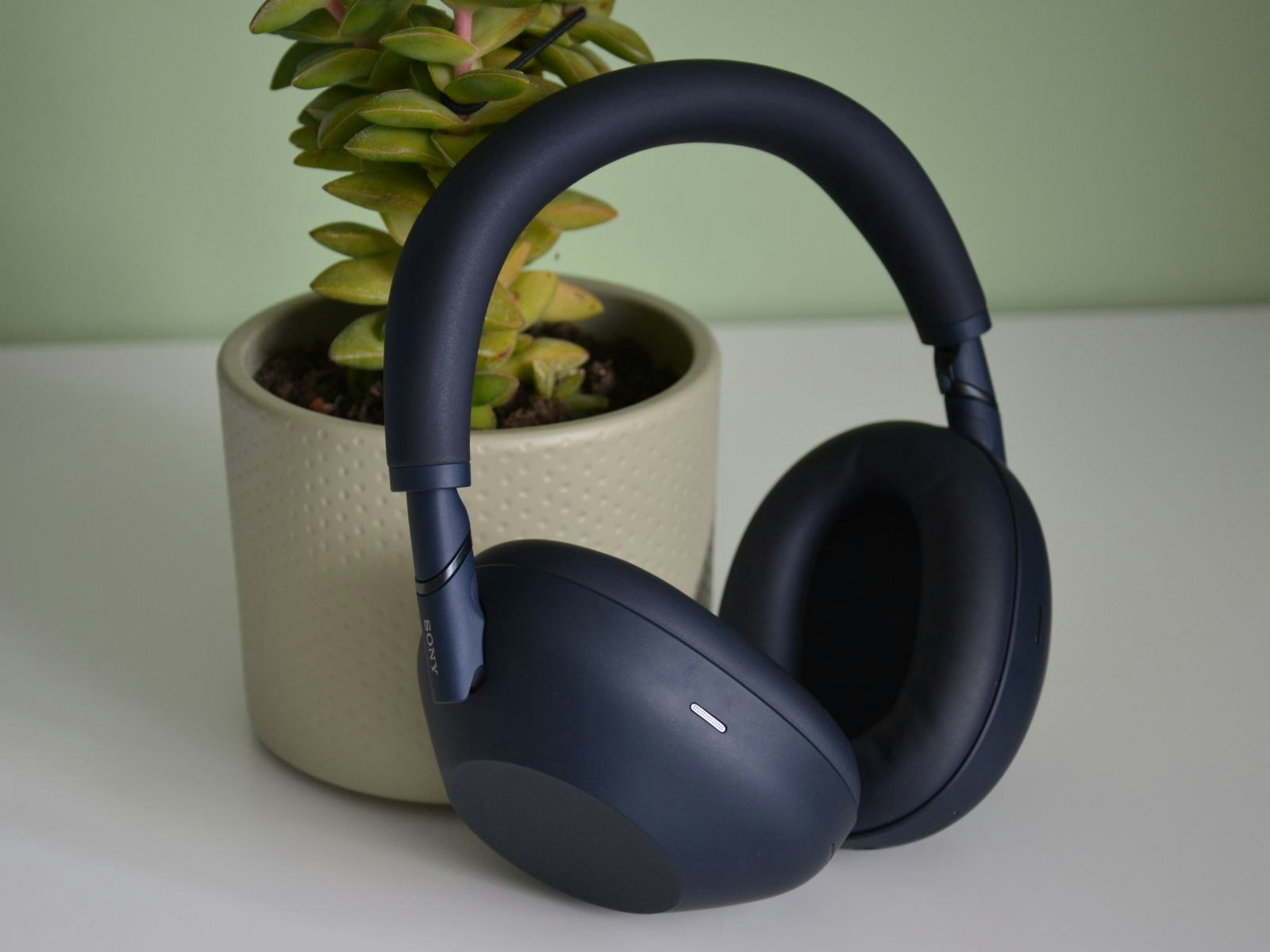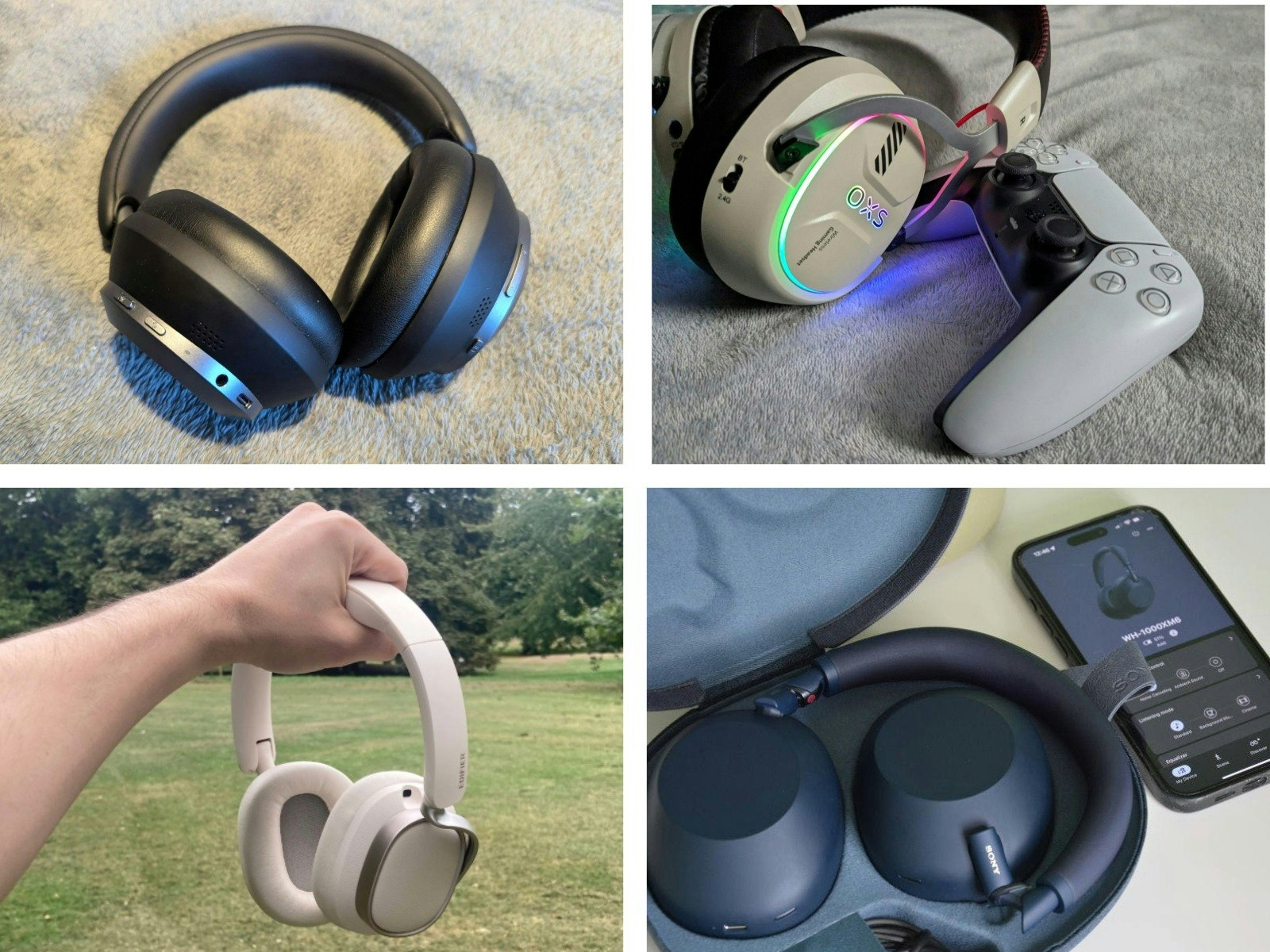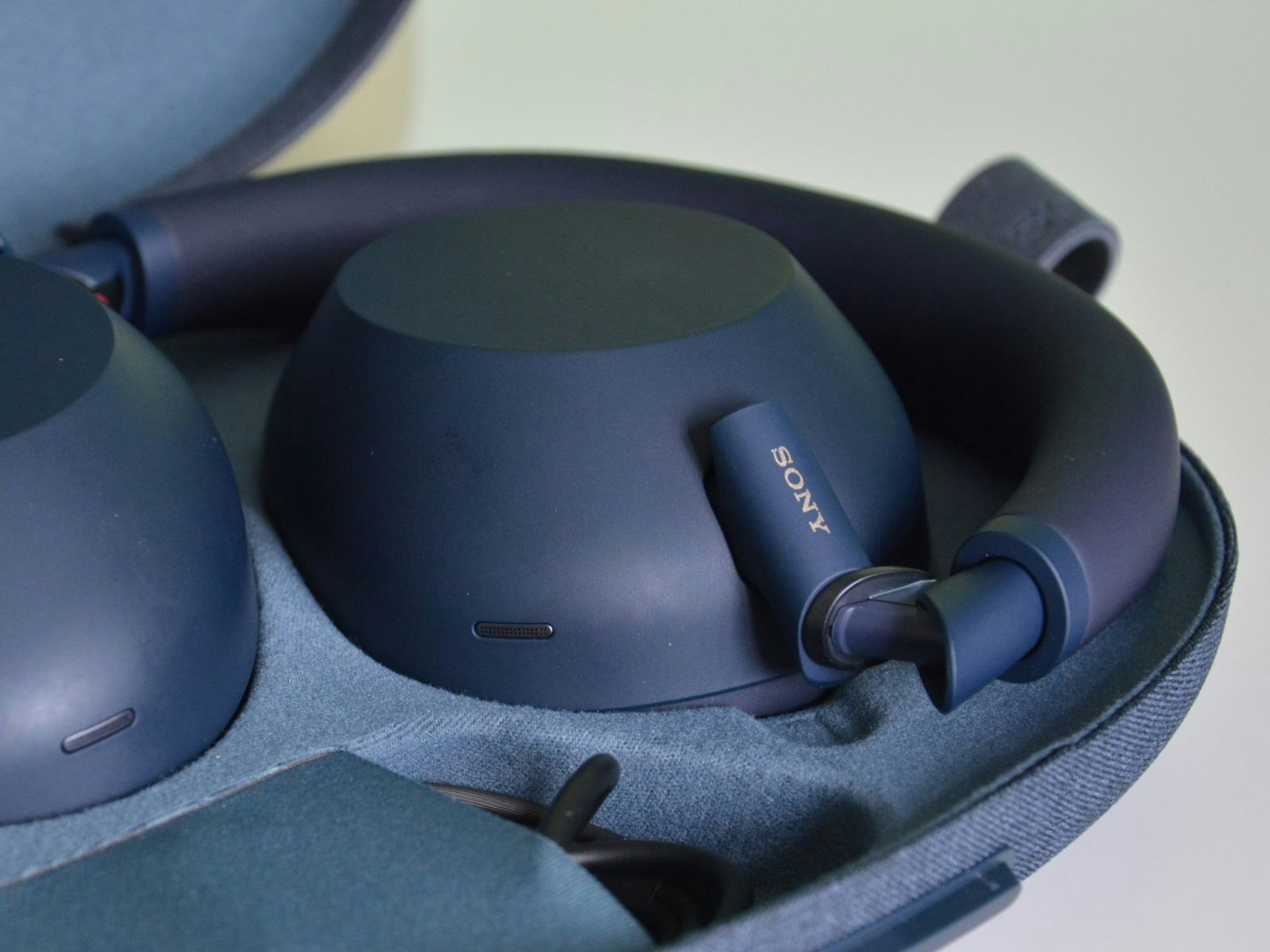The Best Surround Sound Headphones For Home Cinema, Hi-Fi & Gaming
What does surround sound mean when it comes to headphones?

For years, surround sound was the preserve of home cinema obsessives, the kind of people who measured speaker placement in millimetres and spent weekends threading cables through floorboards. Like much in the audio world, things have changed. What once took a living room's worth of gear can now be replicated by a single pair of headphones. No AV receiver, no satellite speakers, no increasingly strained relationships or annoying neighbours. Just put them on and hit play.
From blockbuster sound design to the thud of digital footsteps in your favourite games, spatial audio has evolved from grand immersion to intimate solo escape, and the results are beyond impressive. Done well, surround sound headphones elevate passive viewing into something much more dynamic, reactive, and, occasionally, downright transcendent. And that's true whether you're in a COD firefight, on a flight, or back home listening to Vangelis in the dark (again).
But while the promise of surround sound is simple, the headphone landscape is anything but. There are virtual and object-based formats, gaming headsets with on-the-fly chat mixing, audiophile cans tuned for surgical sonic precision, and more acronyms than most people would care to decode. Some headphones aim for fidelity, others for bombast. There are those trying to mimic a 7.1 setup, while others fool your brain into thinking you're in a Dolby Theatre.
In this guide, we've broken things down into two categories: film and music headphones and gaming headsets, as well as a few hybrids that, like a smouldering Joaquin Phoenix, manage to walk the line. But before we get into the hardware, a word on the tech, because not all surround sound is created equal. Some of it's the real deal. Others feel less "true surround" and more stereo on steroids – and in the world of head-tracking, imaging, and everything-Atmos, knowing what you're actually buying is half the battle.

Surround Sound Headphones Explained
Trying to make sense of surround sound headphones? The terminology can get messy fast. But really, it breaks down into two camps: true surround and virtual surround.
True surround headphones were the originals. Back in the early 2000s, brands like Zalman and Sony packed multiple mini speakers into each earcup, one for every channel in a 5.1 or 7.1 setup. In theory, this gave you precise, real-world positioning (front-left, rear-right, and so on). In practice... Not always great. They were bulky, expensive, and often overwhelming to listen to. Some models still try this today, but smarter designs opt for fewer drivers, letting your brain do the rest. After all, immersion isn't just what hits your ears, it's what your mind makes of it.
Virtual surround, on the other hand, uses just two speakers, left and right, but manipulates timing, phase, and frequencies to create a 360-degree soundscape. This is the technology behind Windows Sonic, Sony's Tempest 3D Audio, DTS Headphone X, THX Spatial Audio, and the ever-popular Dolby Atmos. It doesn't rely on fixed channels but treats sounds as dynamic objects that can move around your headspace. Think footsteps creeping behind you or a helicopter swooping overhead. It's all software, and when done right, it can be incredibly convincing, which is why you'll find it featured on many of today's best gaming headsets.
So, which is better? Well, it all depends on how you listen. Competitive gamers might want the fast, accurate cues of Windows Sonic, while movie lovers may prefer the cinematic feel of Atmos or DTS. And for most people, especially in 2025, the best virtual surround software is good enough to make your games or films feel huge, without the bulk, cost, or confusion. Many options are free and work with any standard stereo headset. Scroll down to our buyer's guide to see which one's right for you.
How we chose the best surround sound headphones
We choose the best surround sound headphones using in-depth research, hands-on testing, and our experience as tech journalists. We look at brand reliability, pricing, user reviews, and how well each pair handles what really matters: movies, music, and gaming. For surround sound sets, we focus on sound quality, value for money, comfort, and build. We also highlight headphones with features like immersive audio formats and wide connectivity. You'll find more details on each product's strengths and specs in the breakdowns below. Curious how we test and score them? Here's a full explanation of our review process.
All prices are correct at the time of writing. Prices, stock and deals are subject to change without notice.
Best Surround Sound Headphones In 2025: Music & Movies
Best Surround Sound Headphones In 2025: Gaming
Expert's choice: Best Surround Sound Headphones of 2025
Every pair of headphones on this list delivers surround sound in some form, whether through true multi-drivers, virtual processing, or other spatial formats. At the top of the list are Sony's WH1000XM6, unmatched for sound quality, comfort, and seamless use across phones, consoles, and TVs.
That said, if gaming is your priority, we recommend the SteelSeries Arctis Nova Pro. It excels in spatial imaging (the feature that makes or breaks a gaming headset) and boasts long-lasting comfort – a requirement for extended gaming sessions. If you're on a tighter budget, the Corsair HS65 delivers solid performance for its price. And if you want something that looks as good as it sounds, the Beoplay Portal is a sharp, stylish middle ground, working just as well for music and movies as it does for gaming.
What to look for in surround sound headphones
Buying surround sound headphones isn't about throwing money at the shiniest pair, hoping that they'll deliver. It's more like casting a lead role – the right choice depends on the part they'll play in your life. Are you dodging cannibalistic farmers in Resident Evil 7? Bingeing every Odyssey-adjacent film in prep for Nolan's next epic? Or wanting to be a fly on the studio wall as the Beatles cook up Get Back? Not wishing to wring this metaphor dry, but different roles demand different actors, and miscasting here can tank the performance.
Audio
Before you get carried away by looks, start by asking yourself the obvious: what's the gig? Are you stomping your way through Dead Space? Hitching an express elevator to hell with Hudson in Aliens? Both might be up in space and crawling with nasties, but your mission changes everything. Gaming cans favour punchy, in-your-face sound that makes gunfire crack and footsteps echo, while cinephile-leaning sets go for surgical precision – every note in the score, each line of dialogue crisp and unmuddied. Pick the right one and, like Indy in The Last Crusade, you'll have chosen wisely. Go for the flashy showpiece that's all style and no substance, and you'll be pulling a Walter Donovan before the credits roll!
Drivers and EQ
At the heart of every pair of headphones are the drivers – the tiny speakers inside each earcup that make the magic happen. Most consumer headphones use dynamic drivers, typically between 30 and 50mm. Larger ones, like those in the Audeze Maxwell, delve deeper into the bass, creating a subwoofer-in-your-skull sensation. But size alone doesn't determine a great pair of headphones, nor does the number of drivers.
You'll hear plenty of hype about true 7.1 surround with multiple drivers, but some of the best headphones we've tested only have one driver in each earcup. With the right virtual surround processing, they can match or even surpass multi-driver setups. And if anything, what truly makes a difference is how much you can customise the sound yourself. If you enjoy cinematic punch, you'll want headphones that allow you to adjust the EQ. If hearing every detail of a score or catching every line of dialogue is more your thing, you'll still need something that offers that level of precision. That's why it's worth checking how adaptable the sound is within the dedicated app or software before making a purchase. Equally, if you'd prefer to build that cinematic punch into your living room – rather than, or in addition to, a headset – our budget soundbars guide is well worth a look too.
Comfort and build quality

After three hours of wear, bad headphones tend to reveal themselves. You want a headband that stays snug without squashing your skull, and earcups that comfortably cover your ears for ANC – without pressing directly on them. So, a good first call is to check if the headband adjusts to fit your head size. Have a good look at the earcups: are they replaceable and roomy enough? The last thing you want is headphones clamping down rather than gently enclosing your ears.
Materials matter, too, with breathability being king here. Memory foam and soft leather are great telltale signs of comfort, making sure you won't be sweating buckets. When it comes to durability, metal-reinforced headbands, replaceable ear pads, and detachable cables or mics are the little things that'll stop your £300 investment from quickly becoming part of an online auction.
Gaming headsets get an especially rough ride, between furious headband yanks and the occasional rage-quit throw. So, depending on how often you crash out mid-game, sturdiness is less optional and more essential should you have any intention of keeping them long-term.
Battery life and connections
Wireless is bliss until the battery unexpectedly taps out. Most ANC-equipped headphones give you 20 to 30 hours of playback, with unicorns like the Sennheiser Momentum 4 pushing that up to 60, eliminating charging anxiety altogether.
Keep an eye out for multi-device connectivity. Granted, it's pretty much everywhere now, but it's still worth checking for. Being able to hop between your phone, laptop, TV, and console without faffing around with pairing menus is a feature you don't think about until you find yourself without it.
We found Sony's XM6 headphones nail this especially well, remembering your devices so that when we powered them on, they hooked straight up to our Sony telly (one of the models from our best TVs guide) without hesitation. Even better, they keep your laptop and phone connected at the same time. The moment we hit play on Cregger's exhilarating Weapons score, the headphones switch over instantly, the music ready to run, arms outstretched.
For gamers, wired still rules on latency, but low-lag wireless cans are catching up fast. If your device supports them, codecs like Sony's LDAC and aptX HD will give you better fidelity. But if you're mostly rabbit-holing on YouTube or streaming, don't sweat it – you won't be pushing your headphones anywhere near their limits.
Active Noise Cancellation (ANC)
The true star of Trains, Planes, and Automobiles – sorry, Steve Martin. High-quality ANC can cut through the chaos of any commute or cafe stint, whether you're typing for work or streaming on the go. It has become essential not just for concentration but for the simple task of moving through a noisy world without raising your blood pressure, especially for the introverts among us.
What began as a niche airline travel feature is now an expectation in today's best headphones, though quality varies enormously between models. The most effective sets use multiple microphones, both inside and outside the ear cups, to cancel ambient noise. Feedforward ANC captures incoming sound with external mics, while feedback systems monitor what actually reaches your ears.
That said, hybrid models remain the gold standard. They combine internal and external microphones for maximum effect, though at the slight cost of battery life. Pair that with spatial audio formats like Dolby Atmos, Tempest 3D, or DTS, and you're right at the centre of the action.
At their best, headphones from the likes of Sony and Bose can cut outside noise by up to 85 per cent in ideal conditions, carving out your own pocket of tranquillity.

Headphone Terminology
Headphone jargon can be tricky to untangle at first, so we've collated a quick guide to the key audio terms you're likely to encounter while shopping.
Spatial Audio: Audio technology that mimics 3D space, so sound feels like it's coming from all around you, not just left and right. Great for making movies, games, and series feel more immersive.
Dolby Atmos: A type of spatial audio that places sounds in a 3D space like objects, letting them move above, behind, or beside you. It's more flexible than true surround and is supported by most streaming services.
DTS Headphone: X: Virtual surround designed for any pair of headphones, stereo or otherwise. It uses less compression than Dolby Atmos, so it arguably offers cleaner, sharper audio. That said, it does not compete with the immersion of Atmos.
Windows Sonic: Microsoft's free spatial audio tech for Xbox and Windows. It boosts stereo headphones with virtual surround – no extra gear required.
Closed-back: Closed-back headphones have sealed earcups that keep your music in and outside noise out – ideal for when you're in a loud room or don't want to disturb anyone nearby.
Open-back: Open-back headphones have vented earcups that let air and sound pass through. While they offer a wider, more natural sound, they're more susceptible to noise leakage.
In-ear (Earphones): These are small headphones that rest inside the ear canal. They are great for portability and noise isolation, though the soundstage is typically more limited.
7.1 Surround Sound: A surround format that uses multiple drivers in each earcup to simulate directionality. Sounds good on paper, but virtual surround usually performs better in reality.
Driver: The mini speaker inside each earcup or earbud. Bigger or better drivers mean clearer, more powerful sound.
Earbuds: Compact headphones that rest just outside the ear canal. Easy to wear, but they are less isolating and usually less immersive than over-ear models.
Image Depth: How far away sounds seem to be. For instance, whether a voice feels close-up or distant in a mix.
Image Width: The left-to-right spread of sound. Wider imaging makes audio feel more spacious.
Imaging: A headphone's ability to place sounds precisely in space, allowing listeners to tell where footsteps are coming from in a horror film or game, and which side the guitar or vocals are on in a song.
Isolation: How well a headphone blocks outside noise just through its design. Closed-back and in-ear models tend to perform better than open-back models.
Noise Cancelling: Tech that uses microphones to cancel out background sound in real time. Ideal for planes, trains, and open-plan office spaces.
Punch: The sense of impact in bass and low-end. When done right, it feels slick and thrilling, without overwhelming everything else.
Soundstage: The feeling of space you get from headphones. A wide soundstage makes it seem like you're sitting in the middle of the action.
Warmth: A sound quality that leans into bass and low mids. It often feels rich and smooth, but can lose some treble detail if not balanced correctly.
Wireless: Headphones that connect over Bluetooth or other wireless methods.
Why should you trust us?
We work hard to ensure everything we write is accurate, up-to-date, and genuinely helpful. That means constantly researching products, keeping an eye on market changes, and doing our best to pass that insight on to you. We believe honesty matters. Anything less would be a disservice to our readers and our reputation as a trustworthy source of unbiased, accurate product information.
Our writers have tested a wide range of tech over the years. They use that expertise in all our articles, reviews, and advice pieces, have complete control over what they recommend, and select products that they believe best match the needs of our readers. We do not take payment for reviews. Though we may receive a commission or other compensation from the links on this website, we never allow this to influence product selections. These links allow us to continue doing what we love: providing meaningful and valuable consumer product advice.
Want to know more about how we pick our products? Here's how we recommend.
Latest updates
This article was first published in August 2025. Future relevant additions and amendments will be noted here.
Harvey Isitt is a Tech Writer and Reviewer for Empire, What's The Best, and other brands. He specialises in soundbars, speakers, TVs, cameras, and home cinema setups – if it makes your movies look or sound better, he's tested it. From Dolby Atmos sound systems to multiroom audio, he's all about finding the best setups for film lovers.
Besides reviewing tech, Harvey is a devoted cinephile with an ever-growing movie collection and a borderline reckless number of streaming subscriptions. He runs @filmsyoushouldbewatching on Instagram, where he shares his love of film with nearly a million followers.
What's Your Reaction?











